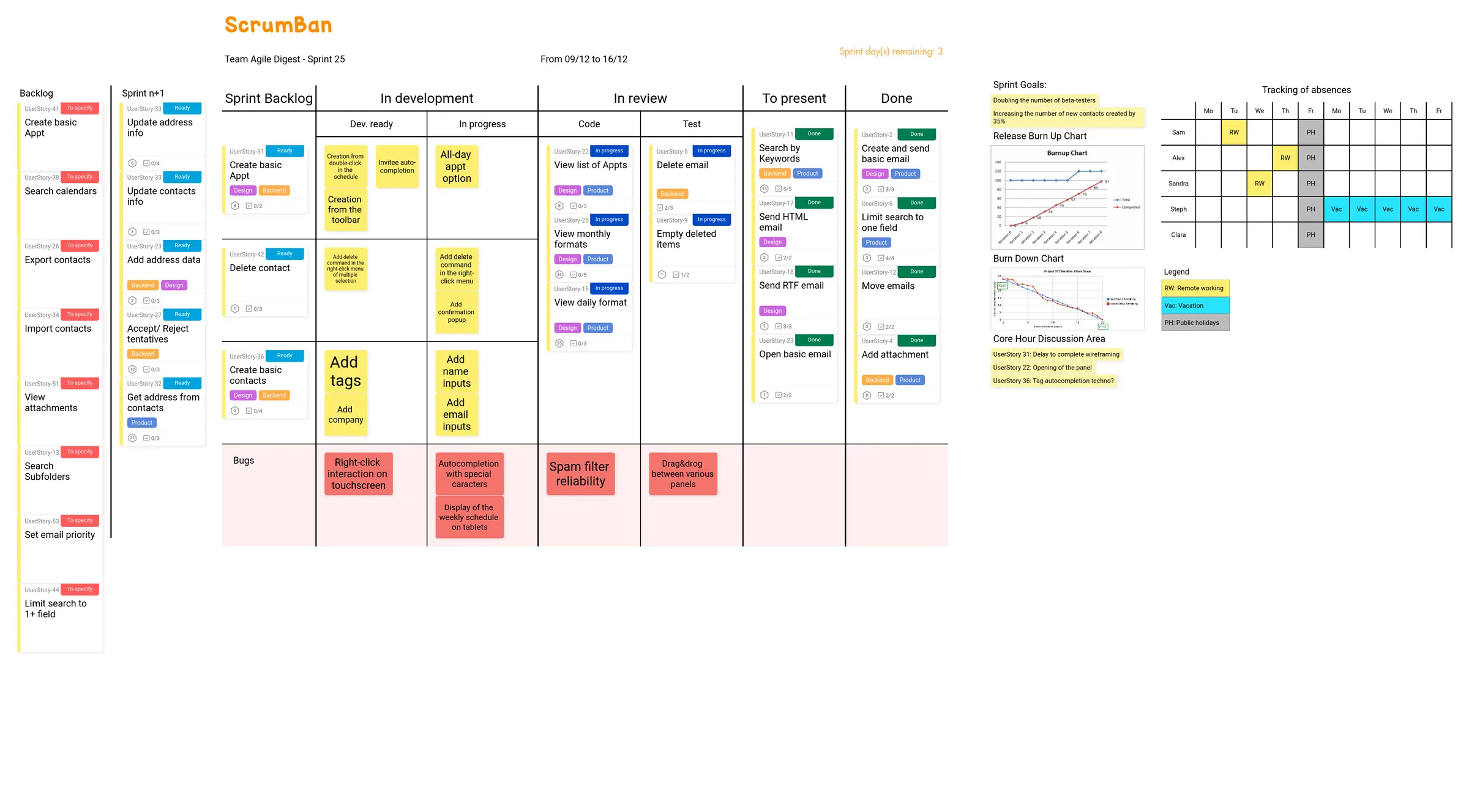ScrumBan

What is Scrumban?
Scrumban is a software development methodology introduced by Corey Ladas in his book “Scrumban: Essays on Kanban Systems for Lean Software Development” in 2008. It combines the principles of Scrum with Kanban’s workflow management method.
The goal of Scrumban is to optimize the production flow by making the best use of available resources and eliminating unnecessary aspects of Scrum, such as redundant management functions, individual versatility, Product Owner role, Sprint Planning, detailed estimation of user stories, and more. The methodology is inspired by Lean Software Development.
The principles of Scrumban
-
The basics of Kanban
Scrumban combines elements of both Scrum and Kanban methodologies. It borrows from Kanban the concept of defining the value chain, visualizing the production flow through central visual management, and dividing work into tasks that can be carried out in a self-directed manner. Additionally, Scrumban limits the amount of work at each stage of the production flow through system rules.
In Scrumban, the time taken to complete the production cycle is a crucial metric to follow, similar to Kanban. The burn-down chart is considered unnecessary by the author.
-
Some of Scrum’s aspects
Scrumban adopts the same process of planning, review, and retrospective at regular intervals as Scrum. These intervals can be of two weeks or longer. Additionally, the framework requires the organization of Daily Standup Meetings, but unlike Scrum, the event facilitator lists the tasks instead of the team members.
-
The principles of Lean Software Development
In order to avoid wasting efforts, Scrumban recommends only preparing work items that are scheduled for the next production cycle. This ensures that the development team always has the most relevant tasks to work on at any given moment.
Moreover, the author suggests that it is unnecessary to estimate each individual work element. Instead, the focus should be on ensuring that the sum of all work elements in the backlog for the upcoming cycle can be accomplished during that cycle.
-
A more hierarchical organization
While Scrum suggests creating small autonomous teams of 3 to 7 members, Scrumban recommends larger, more hierarchical teams that cover the entire value chain from design to deployment. A Scrumban team typically comprises 20 to 50 members.
In contrast, the Lean organization is structured around expertise, and work is divided based on individual skills and preferences. This results in a more hierarchical way of operating compared to Scrum.
-
Particular attention paid to the management of incoming flows
In order to manage the workload efficiently, it is important to limit the number of tasks that can enter the system. Therefore, incoming work items are carefully managed and prioritized based on their importance.
The backlog items are continuously evaluated through a voting process that takes into account the interests of all stakeholders. When a spot opens up in the production system, the item with the highest number of votes is moved forward to the production flow.
Although rare, sometimes there may be a critical request that requires immediate attention. In these cases, Scrumban allows for dealing with only one emergency at a time, which is known as the Silver Bullet.